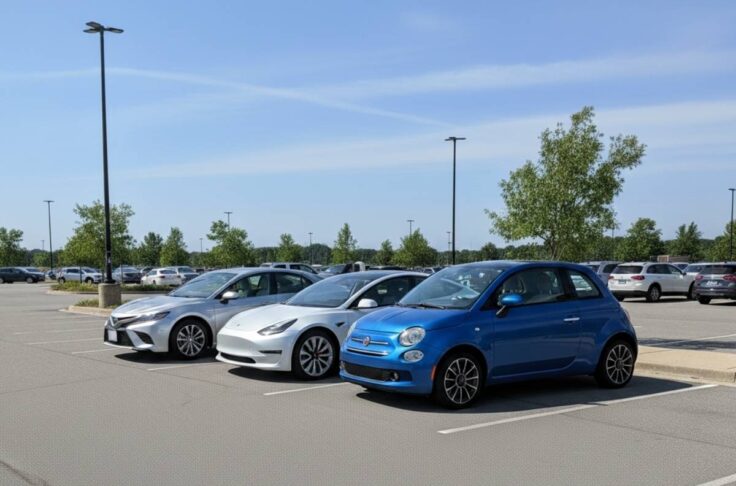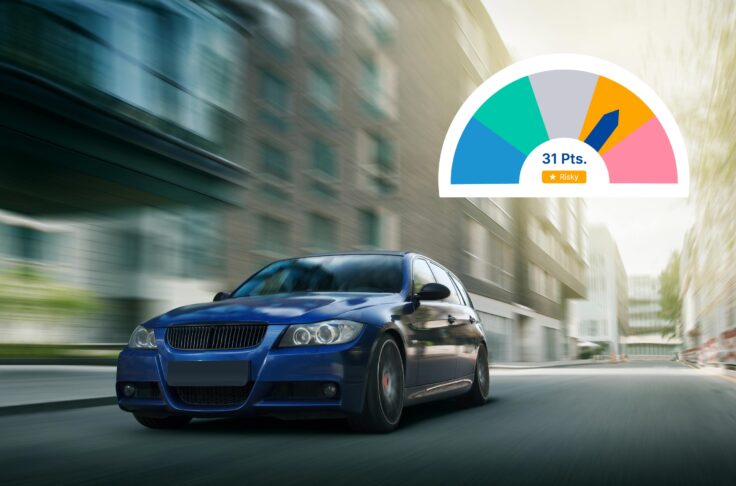Acceleration-based telematics features in shared mobility (pt. 1)
Summary
Acceleration-based telematics features are the foundation of enhanced driving analysis. Fleet operators can monitor both vehicle status and the driving behavior of clients by interpreting and processing data from their telematics’ accelerometers and satellite navigation hardware. This blog piece looks at event detection for parked vehicles that lets shared mobility operators look into unusual vehicle movements.

Telematics and connectivity solutions are the technology backbone of shared mobility services. Fleet operators use them for direct vehicle access and to pull data for seamless user experiences and increased business efficiency. Apart from basic vehicle or immobilizer lock/unlock functions, telematics systems include satellite navigation hardware and accelerometers. These acceleration-based telematics features can send alerts that give valuable data about vehicle statuses. Operators can use this data to track driving behavior of clients, making accelerometer-based features the foundation of enhanced driving analysis.
This two-part blog series outlines telematics accelerometer features and the potential of using the data they generate along with GNSS and other resources to give valuable insights into vehicle statuses and driving behavior. Fleet operators can use these insights for data-driven optimization of their services. Let’s start by looking at intelligent event detection for parked vehicles.
The importance of accurate vehicle positioning
Knowing the exact location of vehicles at all times is vital to operators. They need to know where and when rentals start and end to track their fleet and to manage charging or cleaning services. Knowing the precise vehicle location also shapes the clients’ experience, as they rely on it to be able to easily find available or reserved vehicles.
Telematics systems use Global Navigation Satellite System (GNSS) to determine vehicle locations. To make positioning even more precise, some telematics use a WiFi module to match the GNSS location with the location of available networks nearby. But satellite-based or WiFi positioning can drain vehicle batteries on parked vehicles too quickly. This creates the risk that clients may not be able to start their trip. As a result, sharing operators would need to receive their parked vehicles’ locations less often, for example only once per hour. However, stolen vehicles become hard to track when their data is sent that rarely. Therefore, it is important to track thefts or accidents without draining battery power through frequent data transmission.
Accelerometer data can help ensure that operators are always able to detect suspicious vehicle movements. They react to sudden movements and can quantify a detected shock or motion. After they register unusual movements that exceed a threshold set by the operator, the telematics will wake up and send an updated vehicle location.
How CloudBoxx tells different acceleration events apart
It’s important to accurately interpret acceleration data. A short impact needs different interpretation than constant movement. A shock could be one vehicle bumping into another, whereas a continuous movement could be the vehicle being towed or pushed away. Additionally, tilt detection is very relevant for two-wheelers, as these can be tipped over. In this case, the accelerometer reading gives clues on the “new” orientation of the vehicle.
CloudBoxx has a built-in accelerometer used to detect shock, motion, and tilt events. The figure above shows the acceleration of a vehicle over time for two different event types. The upper graph shows an impulse-like acceleration of a very short duration, indicating a shock event like a crash or parking bump. The lower graph shows a vehicle being towed; acceleration is constant for a while after the initial increase.
An initial calibration done right after installation of the CloudBoxx sets the “upright” position of a two-wheeled vehicle in order to detect tilt later. Exceeding a pre-set angle threshold triggers a tilt event, measured as lateral acceleration by the accelerometer. The operator can then go set the vehicle upright again.
It’s key that the tilt angle is not too limited, especially for mopeds. Clients often have two options for parking a moped: either on the main stand or on the side stand, which tilts the moped to one side. Operators can avoid these “false positives” by setting custom thresholds for their CloudBoxx accelerometers. They can define activation thresholds by setting a range of acceleration for shock or motion, or a width or duration of the acceleration signal.
Conclusion
Fleet operators can react to theft and vandalism by investigating and analyzing accelerations of parked vehicles using the CloudBoxx. Accurate detection and interpretation of different acceleration events is key. Acceleration-based telematics features in the CloudBoxx measure and quickly interpret events like bumps during parking, suspected thefts, or towing. It then report the events if accelerations exceed thresholds set by the operator.
Learn more about INVERS Driving Analysis and how shared mobility providers benefit from CloudBoxx acceleration-based features.


